-

-

-
Biography
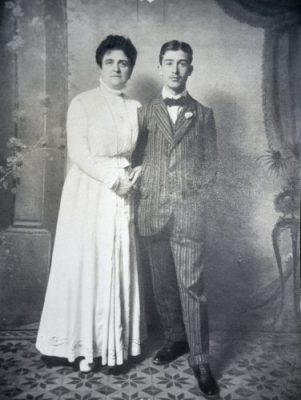
1892
Charles Honoré Loupot is born on the 20th of July in Nice to David Loupot and Joséphine Grassi. He is the couple’s second child, but sadly his sister Marika dies aged 5. He has an otherwise happy childhood in Nice and subsequently in Ardennes, where Loupot begins his studies.
Charles spends some time in a boarding school in San Sebastian while his father, a military officer, is domiciled in Bilboa.
David Loupot subsequently leaves the military and takes up the post of Advisor of Foreign Trade from France.
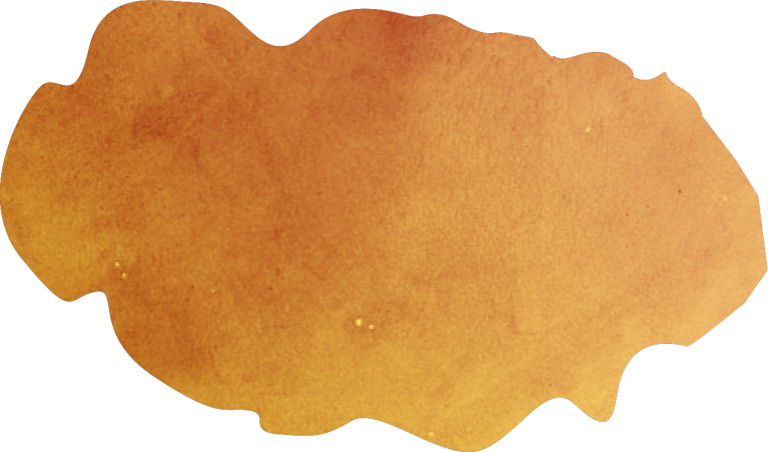
1905
Around 1905 the family move to Lausanne, Switzerland following David Loupot's appointment as representative for the Companie Saint-Gobain.
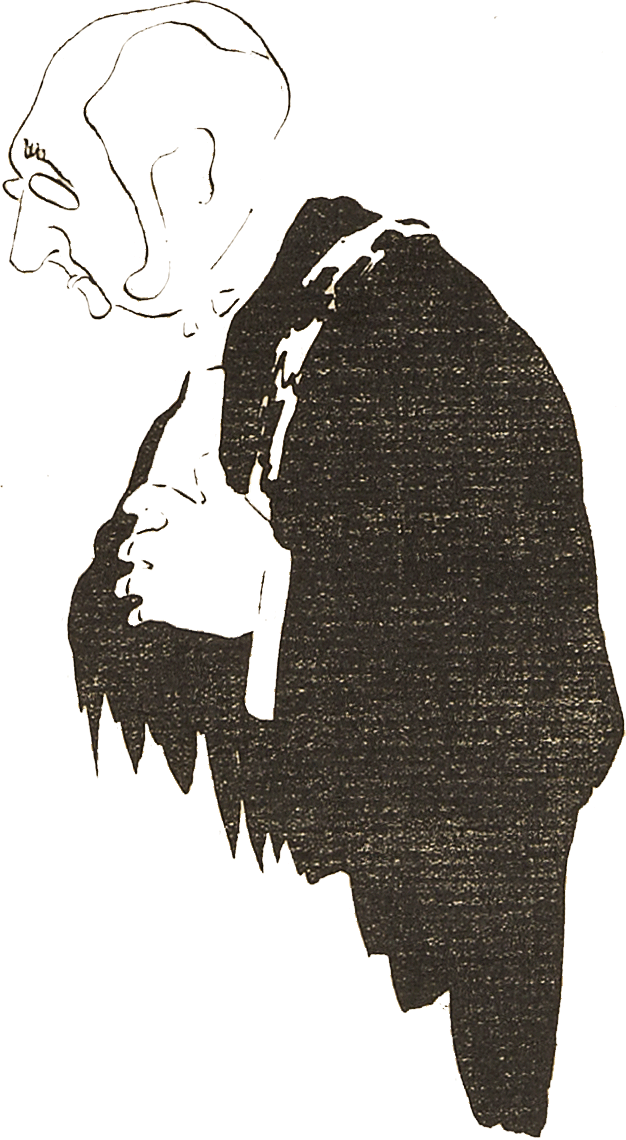
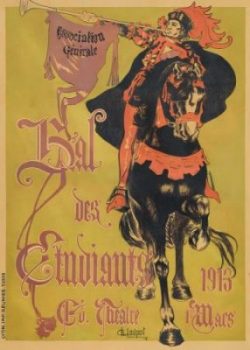
1911
Loupot enrols in the National School of Fine Arts (Beaux-Arts) in Lyon, attending classes in life drawing and painting.
In his first year Loupot is awarded the medal of Friends of the Arts. Among his fellow students are the sculptor Gimond, and the illustrator Touchagues.
He begins to experiment in graphic design, and in 1913 produces his first poster, 'Le Bal des Étudiants'.
1914
War breaks out, and Loupot is conscripted to fight. He is amongst the first to be sent to the front, and quickly injured. His injuries are not serious, and he returns to his family in Switzerland.
However, the war devastates a generation. 30% of young men will not return from the battlefields.
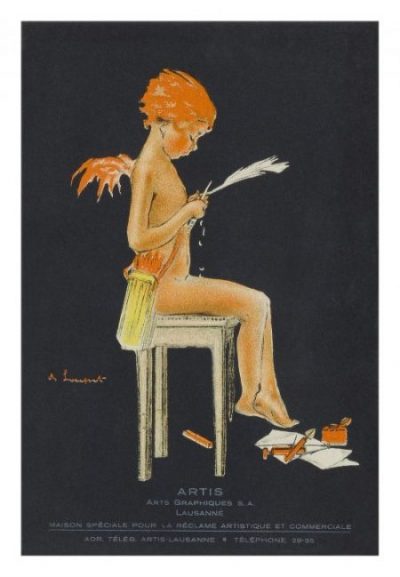
1916
Loupot launches his professional career with a commission from the department store Innovation, shortly followed by illustrations for the newspaper La Feuille d'Avis de Lausanne.
Loupot moves away from painting to concentrate on poster design. During this time he creates more than sixty poster projects for Swiss printers, which are then sold onto different brands - meaning that his designs are repeated throughout several different advertisements. In return he is taught the constraints and possibilities of lithography, and develops his understanding of the professional techniques used by the printers.
His work is predominantly in fashion illustration, and quickly attracts public attention and critical acclaim.

1923
With an established reputation in Switzerland, Loupot leaves Lausanne for Paris and moves in with model and muse, Marcelle Vittet, whom he later marries.
The Parisian Printers firm, Maison Devambez - well known for their patronage of the then leading poster artist Leonetto Capiello - arrange for the commission of two posters for the automobile company Voisin. The posters were an instant success. The critic Roger L. Dupuy gives voice to public amazement when he describes how they caused nothing short of a scandal in their novelty. Loupot's collaboration with Devambez, however, was to be short-lived, ending after the creation of a third poster.

1924
Les Belles Affiches is founded by Étienne Damour, head of one of the leading agencies of the time. Loupot is selected to be the sole creative director, working under André Aubrespin, who as commercial director has an unusually active role in the promotion and selection of poster design.
The summer Olympics are held in Paris at the Stadium of Colombes.

1925
Loupot, along with three other major artists, is selected to produce a poster for the exhibition 'Exposition Internationale des Arts Décoratifs', from which the period term Art Deco is now taken. He moves into the old atelier of the famed Academic painter Gérome.
Advertising is moving away from flowing, painterly illustrations to a more streamlined graphic design reflecting the modern aesthetic of industry, machinery and aerodynamic transport and skyscrapers. The use of airbrushing gives a smooth surface to images whilst creating three dimensionality.

1927
The wine company Étienne Nicolas approach Loupot to modernise the brand. The original delivery man, 'Nectar Livreur', that had been designed by Drasny is transformed ironically into 'Nectar Gentleman Livreur'. In this year Loupot also begins works for a number of other prestigious brand names, including Eugène Schueller of L'Oréal, Valentine, Ocap, Mansavon, Dop, and Ambre Solaire.
1928
Loupot marries a second time to Jane Alfassa, with whom he has a son the following year.

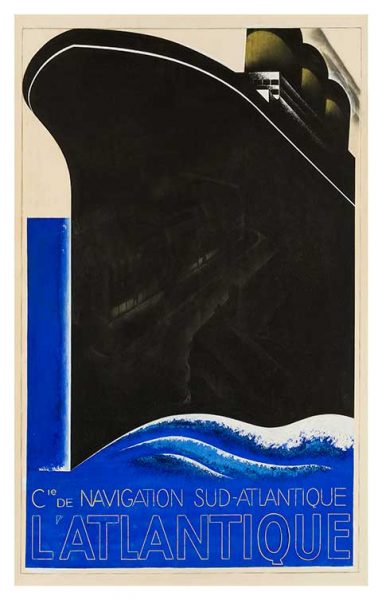
1930
The collaboration between Loupot and Aubrespin for Les Belles Affiches ends. Loupot now enters another collaborative enterprise, L'Alliance Graphique, this time with the renowned contemporary poster artist A. M. Cassandre for the Printers Danel, led by Marcel Moyrand.
During this period Cassandre and Loupot compete for each project by submitting their individual ideas to Moyrand, who then chooses between them. It is an uncomfortable situation for the friends, who are used to collaborating. Not an especially successful project, it ends only four years later with the death of Moyrand.

1931
Loupot settles in a workshop in Montmartre and starts working on posters for La Glace Securit, DOP, Ambre Solaire and Coty.
In Paris he visits St Sulpice church almost every week to see the Delacroix paintings – which he admires for their extraordinary colours and compositions.
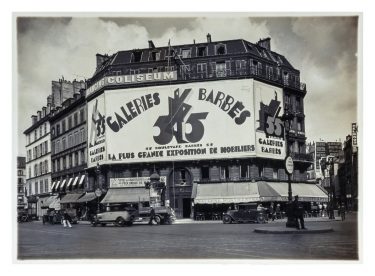
1936
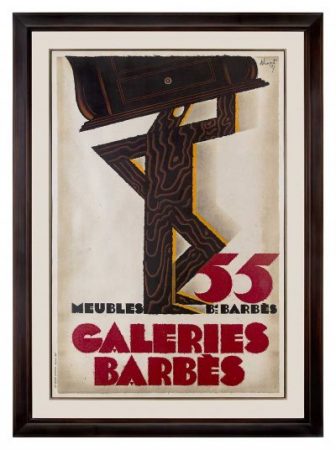
Loupot meets Max Augier, director of advertising for the wine company St-Raphaël. Loupot will work for the company until his death in 1962, gradually modifying the visual identity of the brand, and his designs will be recreated across all medias. Following the war, Loupot's St-Raphaël designs would be almost omnipresent in France.
Around this time he also meets France Pier, who will be his partner for the rest of his life, although they never marry.
1937
Augier commissions Loupot to represent St-Raphaël in the great 'Exposition Internationale des Arts et Techniques dans la Vie Moderne'. Rather than limit his work to a single pavilion, as was normal practice, Loupot covers all of the outside walls of the exhibition in posters.
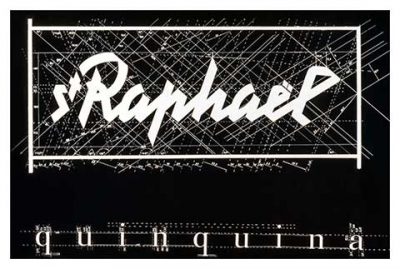
1938
Loupot reworks the lettering of St-Raphaël, showing his absolute mastery of typography. He creates a unique typeface for the brand, which will become so familiar to the public that he is able to use small sections or rearrangements of it in a way that engages the viewer with the advertisement, whilst maintaining recognition of the subject.
1939
With the outbreak of war, Loupot withdraws to his home in Nièvre.
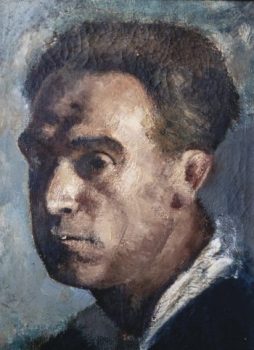
1941
Vichy law prohibits the advertisement of alcohol. Rather than work for the regime, Loupot gives up graphic design and devotes himself entirely to painting for the remainder of the war.
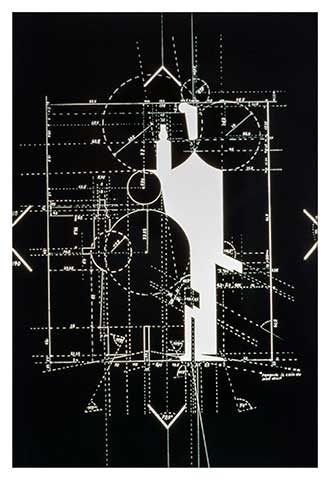
1945
Loupot recommences work for St-Raphaël with a renewed energy, and begins redesigning the brand image with transformed lettering and composition.
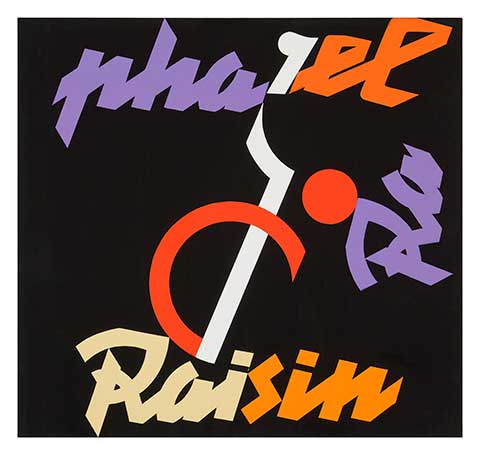
1951
Loupot sets up his own agency, Les Arcs and takes the role of Creative Director. He hires Swiss designers Aschler, Ibach and Schenk to assist with the considerable workload. Jean Lheur is another faithful collaborator.
St-Raphaël is one of Les Arcs’ biggest clients, although Étienne Nicolas also commissions Loupot for a second time with the task of modernising the brand's image.
Loupot's style moves increasingly towards a geometric simplicity that belies its meticulous composition. Each final design entails many maquettes and endless sketches.
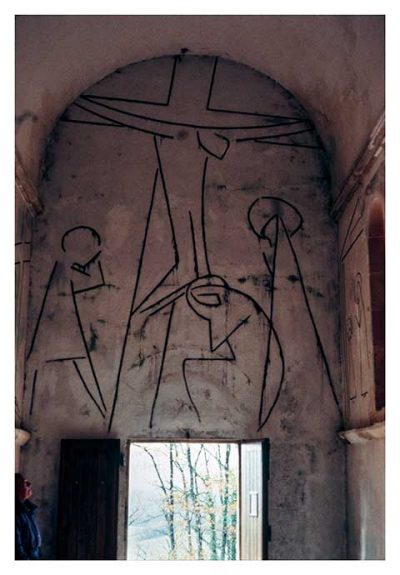
1952
Around this time Loupot begins work on a chapel local to his home in Clamecy, known as 'Le Menou'. As with Matisse's contemporary chapel in Vence, the murals are based on the mysteries of the rosary. The chapel represents a major departure in his painting style, and incorporates much of the new linear vocabulary he is then experimenting with in his poster design.
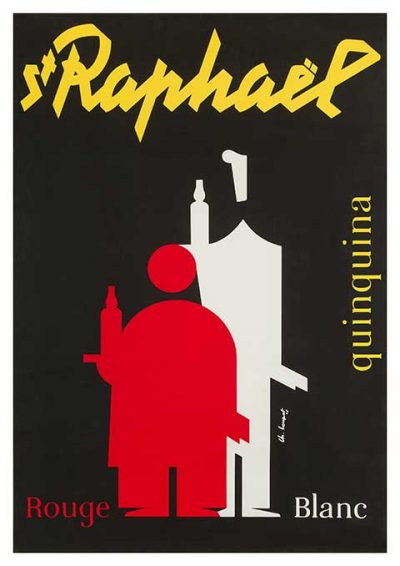
1953
Loupot unveils his new design for St-Raphaël.
He starts to broadcast the advertisements via large numbers of derivative products, and multiple reproductions, in particular billboard walls which can be seen all over Paris, and vehicles decorated with the now infamous branding.

1962
Loupot produces a radically stripped back, almost abstract design for Air Liquide.
Exhausted and unwell, the artist leaves Paris and moves to the province where his parents spent their later years, in the family property named ‘Marika’. He leaves a considerable number of preparatory drawings and models in Paris, which are subsequently destroyed.
Having become the owner of a small vineyard he partners with a few other growers to found a Cantarel group, for which he designs the logo and the labels.
Loupot also contributes to the restoration of the upper district of Parage, designing the specifications to ensure there is harmony in the complete design. He also finds Parisienne buyers for the restored municipality, which has since become a tourist site.
Charles Loupot dies at home in Arcs-sur-Argens on the 18th October 1962.
In 1973 Le Club Français de la Médaille make a medal in Loupot’s honor, produced by Marcel Jacno. A biography was published in 1984, written by Christophe Zagrodski.
The Romain Rolland Art and History Museum in Clamency has a permanent exhibition hall dedicated to the work of Charles Loupot.